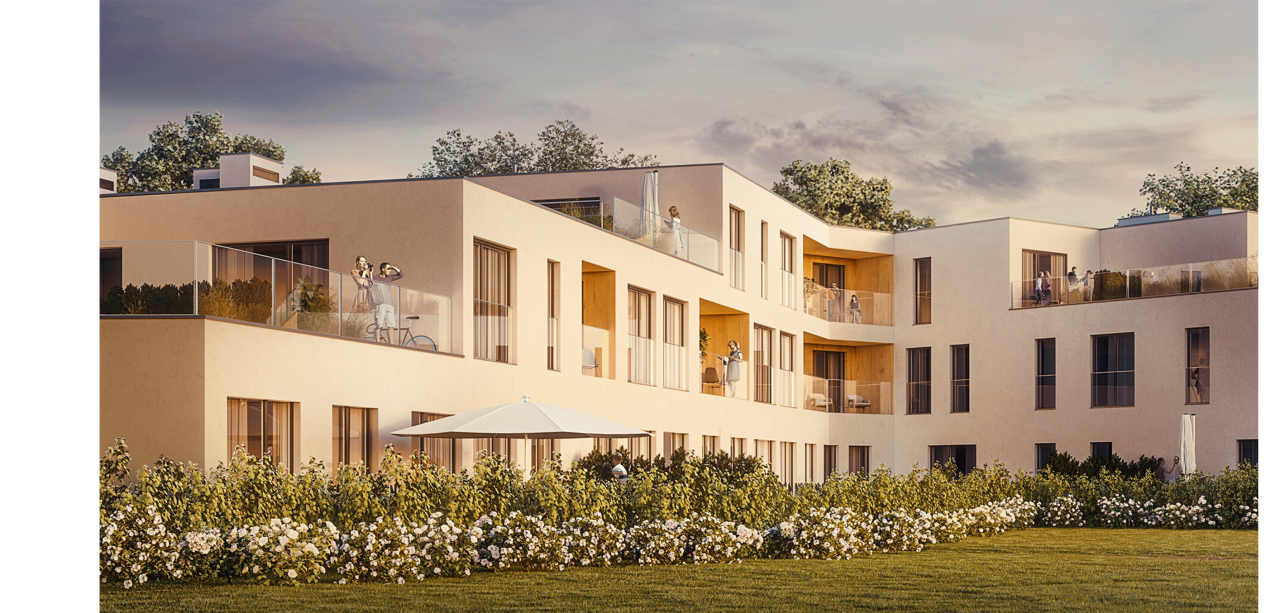How to accept an apartment from a developer in Poland

How to accept an apartment from a developer in Poland
Getting an apartment from a developer is a key process that should not be underestimated. This is the last step before the buyer purchases the property, so it is important to ensure that the apartment is in good condition and meets all the requirements set out in the contract. Technical reception of the apartment is required by law. Both the buyer and the developer are responsible for its correct progress.
Getting an apartment from a developer is a key process that should not be underestimated. This is the last step before the buyer purchases the property, so it is important to ensure that the apartment is in good condition and meets all the requirements set out in the contract. Technical reception of the apartment is required by law. Both the buyer and the developer are responsible for its correct progress.
In accordance with the development law, technical acceptance of the apartment can be carried out by the buyer or his representative. You can carry out the technical reception yourself, or seek professional help. Our company OKEASK will help you with this. This will avoid potential problems or shortcomings that may arise during the adoption process.
The acceptance process involves inspecting the property for any defects or problems that must be resolved before the buyer assumes responsibility for maintaining the property. The developer provides the finished premises to the buyer or his representative to check whether the condition of the property complies with the contract and generally accepted building codes. It is very important to pay attention to every detail during the inspection to avoid problems in the future.
It should also be noted that the technical acceptance of the apartment is the most important stage of the real estate purchase process before the signing of the Transfer of Ownership Act. Therefore, it is important to take the time to properly conduct the adoption process to avoid problems in the future.
What should you check when receiving an apartment?
|
No. |
Object of inspection |
Instructions for inspection |
|
1. |
Entrance doors and windows |
Check the condition of doors, locks, handles, seals and hinges. Make sure windows open and close correctly. |
|
2. |
Walls and ceilings |
Check for cracks, damage, discoloration, moisture or mold. |
|
3. |
Floors |
Check the condition of the floors to ensure they are level, free of cracks, damage and stains. |
|
4. |
Electrical equipment |
Check the operation of all outlets, light switches and appliances. Make sure the equipment is safe. |
|
5. |
Plumbing |
Check the functionality of taps, flushes, siphons, drains, and check for leaks. |
|
6. |
Heating |
Check the operation of radiators, valves, thermostats, check for leaks. |
|
7. |
Bathroom and kitchen |
Check the condition of fittings, tiles, furniture, household appliances, watch for damage, cracks and missing elements. |
|
8. |
Stairs and railings |
Check the condition of stairs, railings, handrails and steps to ensure they are strong, safe and undamaged. |
|
9. |
External and internal lighting |
Make sure all light sources are working properly and there is no damage. |
|
10. |
Ventilation |
Check the operation of the ventilation system, whether the diffusers are clean and there are no air leaks. |
|
11. |
Balcony/terrace |
Check the condition of the floor, railings, drainage, and check for damage or discoloration. |
|
12. |
Parking spaces/garage |
Check the condition and availability of the parking space/garage for damage or debris. |
|
13. |
Common space/fence |
Check the condition of the fence, outdoor lighting, clean and well-maintained paths, lawns and other elements. |
|
14. |
Security and Surveillance |
Check the alarm and monitoring system |
|
15. |
Contact with the developer/office |
Make sure you have all the necessary documents, warranties and operating instructions for the equipment and installations. |
|
16. |
Energy, water, gas meters |
Check the condition of the meters, whether they are installed and working correctly, write down the current readings. |
|
17. |
Home insurance |
Make sure you have a valid insurance policy that covers the relevant risks associated with the apartment. |
|
18. |
Ownership of the apartment |
Check whether the transfer of ownership to you has been carried out correctly and whether you have all the necessary documents. |
|
19. |
Access to auxiliary premises |
Check access to ancillary areas such as basements, storage rooms, common areas. |
|
20. |
Fire system |
Make sure that smoke detectors and fire extinguishers are installed in the apartment and that the fire suppression system is working properly. |
|
21. |
Internet and television network |
Check the correct Internet and TV connections and settings to make sure they are working correctly. |
|
22. |
District and surroundings |
Explore the surrounding area, check for shops, public transport, parking spaces, services, etc. |
|
23. |
Fault recording |
Keep a record of any defects you notice when you receive the apartment so you can report it to the developer. |
|
24. |
Soundproof |
Make sure that the apartment is well soundproofed, make sure that doors and windows do not allow outside noise to pass through. |
|
|
25. |
Thermal insulation |
Make sure your apartment has adequate insulation to ensure thermal comfort and energy savings. |
|
|
26. |
Apartment layout |
Check whether the layout of the rooms corresponds to the plan, whether the doors and windows open in the right direction. |
|
|
27. |
Interior decoration |
Make sure that all finishing work is completed in accordance with the contract and meets your expectations. |
|
|
28. |
Electrical equipment |
Make sure all electrical devices such as fuses, relays or lights are installed correctly. |
|
|
29. |
Cleanliness and tidiness |
Make sure the apartment is clean, free of debris, construction debris or dirt. |
|
|
30. |
Operating fees |
Check to see if you have been provided with information about service costs such as service or maintenance. |
|
|
31. |
Community Rules |
Review the rules of the housing community or co-op to make sure they contain the appropriate information. |
|
|
32. |
Underfloor heating system |
If the apartment is equipped with underfloor heating, check that it is working properly and that it is installed correctly. |
|
|
33. |
Mechanical ventilation |
If the apartment has a mechanical ventilation system, make sure it is working properly and installed correctly. |
|
|
34. |
Room sizes |
Measure the dimensions of the rooms and compare them with the floor plan to make sure they match the contract. |
|
|
35. |
Storage spaces and pantries |
Ensure that all storage areas, closets and storage areas are properly organized and in accordance with the contract. |
|
|
36. |
Corridors and passages |
Make sure that hallways and walkways are wide and comfortable enough to suit the floor plan of the apartment. |
|
|
37. |
Safety for children |
If you have children, make sure the apartment has proper security, such as locking windows or securing electrical outlets. |
|
|
38. |
Roof use |
If the apartment has access to the roof, check that it is properly protected according to regulations. |
|
|
39. |
Gas pipelines |
Ensure that gas lines are installed correctly, are sealed and comply with current standards. |
|
|
40. |
Technical condition of the building |
Make sure the building is in good working order with no damage or cracks to the structure, gutters or roof. |
|
|
41. |
Building sign |
Make sure the building has clear signage such as apartment numbers, staircases or evacuation signs. |
|
|
42. |
Emergency systems |
Make sure the building has emergency systems such as power backup or a power generator. |
|
|
43. |
Access rights |
Make sure you have all necessary access rights to the building, apartment and common areas. |
|
|
44. |
Flood protection systems |
Check to see if the property has flood protection features, such as pumps or sealed windows and doors. |
|
What to check before taking an apartment
So, before you take over an apartment from a developer, there are a few important checks that need to be carried out to ensure that the property is in good condition. One of them concerns structural and security issues. This includes checking for cracks or damage to walls, floors and ceilings, and making sure doors and windows are installed and functioning correctly. You should also check to see if the apartment has proper ventilation and that there are no leaks or water damage that could cause mold growth or other health risks. By carefully checking the property for any design or safety issues, you should ensure that you are accepting a safe property.
Another important aspect to check before you take possession of an apartment is the electrical and plumbing systems. This includes checking that all electrical outlets, switches and fixtures are installed and operating correctly and that wiring is correct. It is also important to check that the plumbing is working properly, including water pressure and making sure there are no leaks or clogged pipes.
It is necessary to pay attention to the decoration and aesthetics of the apartment. This includes making sure that all finishes such as paint, tiles and flooring are done correctly and are in good condition. Additionally, you should make sure that all appliances, such as the stove and refrigerator, are in working order, and that all cabinets and drawers are installed properly and can be opened. By carefully considering the finishing details and aesthetics of the apartment, you should be sure that you are purchasing a property that meets your expectations and is ready to move in.
During the technical acceptance process, it is necessary to check whether the condition of the property complies with the contract and generally accepted building codes. This includes checking for any common defects that may be found during the appointment. Any terms and rules for obtaining an apartment must be included in the contract, and any discrepancies should be discussed with the developer.
As we have already said, you can accept an apartment from the developer yourself. However, when accepting an apartment, it is worth dealing with professionals who will help in this process. If you purchased real estate with the help of our company OKEASK on the website https://okeask.com/en/property-category/kupit-kvartiry, we will be happy to help you in accepting the apartment.
However, you can also contact a certified home inspector. He can check the condition of walls, corners, moisture, risers and levels of the apartment, electrical and hydraulic systems, and then provide you with a written report. While hiring a professional may come at a cost, it can save you time and money in the long run by preventing potential problems.
Apartment reception events
When receiving an apartment from a developer, the first step is to contact the developer to determine the date of receipt. It is also important to clarify any questions or concerns in advance
The next step is to create a checklist of items to review during the adoption process. This may include checking all elements of the premises such as doors, windows, electrical sockets and fittings. It is also important to check the type and category of plasters used in the apartment standard. A checklist can help ensure that all necessary items have been checked and any problems have been documented.
Finally, it is important to document the acquisition process by creating a report containing any comments or issues that were identified during the inspection. The report must be provided to the developer, who has 14 days to resolve any identified problems. It is also important that all necessary documentation related to the construction process is transferred to you, as the new owner of the apartment or house. Getting an apartment from a developer is a key step in the property buying process and taking the necessary steps can help ensure a smooth and successful transition.
Used materials from the site monterbudowy.pl
Blog


Piaseczno has a rich history
Piaseczno has a rich history. Let's get to know her.

An address sign on the house is required
An address sign on the house is required





